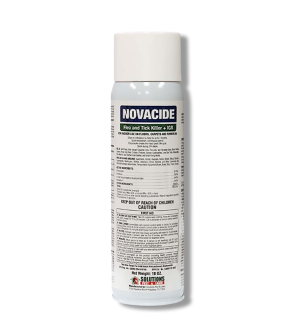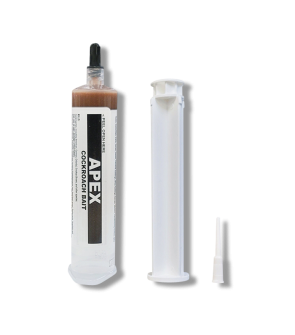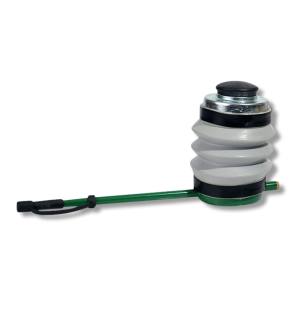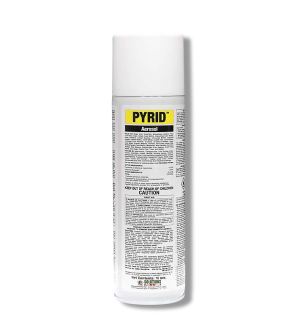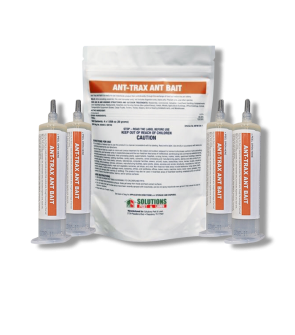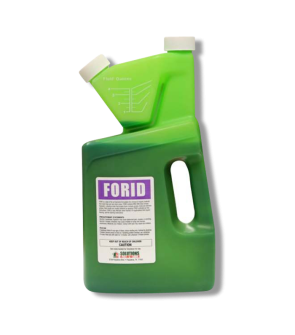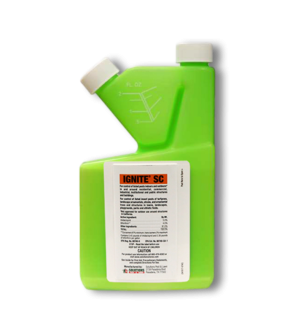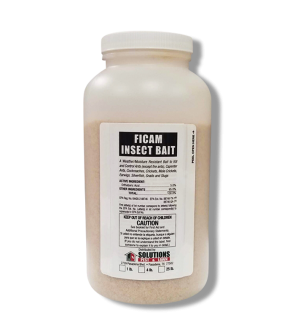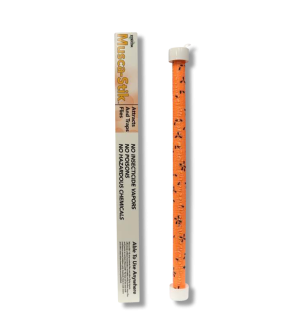Insects in Kitchen
Most Effective Products
Common Insects in Kitchens
Needless to say, pests such as ants, German cockroaches, drain flies, fruit flies, and silverfish often make their way into kitchens. These kitchen bugs love to establish themselves in kitchens due to available food, water, and plenty of cover for hiding.
From defecation, bacteria, or finding the pest itself in your food could risk your own well-being. The last thing any homeowner would want is to be paranoid about the food and utensils contacted with on a day to day basis.
To prevent and keep pests out of your kitchen, learn about them in the article below and use the following products to control kitchen bugs. If you are not experiencing a pest listed here then feel free to contact our customer service team through phone or email for professional advice and tips.
Ants
While it's true that any food can be irresistible to ants, it is often ants such as little black ants, pharaoh ants, or the odorous house ant that are found in kitchens.
Identification

For better visual aid look at the image above: On the left is the little black ant, the middle is the pharaoh ant, and the one on the left is the odorous house ant.
Pharaoh ants are a tiny yellow to light-reddish colored ant, averaging about 1/16th of an inch long.
Little black ants, typically measure about 1/6th of an inch and are predominately jet-black or dark brown in color.
Odorous house ants get their name from the foul rotten coconut smell they emit when threatened or crushed. Besides their smell, these pests can be distinguished from their black or brown coloration and measure about 1/16th to 1/8th inches long.
Inspection
 Little black ants tend to prefer sweets such as sugar or syrup so the most common places in kitchens for this pest to be found are cabinets, floors, or any other places where food is stored.
Little black ants tend to prefer sweets such as sugar or syrup so the most common places in kitchens for this pest to be found are cabinets, floors, or any other places where food is stored.
Odorous house ants favor sweets, but will also eat a variety of other foods like meats. In the kitchen, odorous house ants can be found around water pipes, under sinks, in wall cavities, and within the walls.
Pharaoh ants favor nesting indoors near food and water, which a kitchen ideally provides, sites such as behind or under refrigerators, stoves, microwaves, sinks, and cabinets are the best places to look.
Treatment
Step 1: Maintain Cleanliness
 Keep your kitchen clean and free of food debris. Ants are attracted to crumbs and spills. Clean countertops, floors, and sinks regularly. Store food in airtight containers to prevent access.
Keep your kitchen clean and free of food debris. Ants are attracted to crumbs and spills. Clean countertops, floors, and sinks regularly. Store food in airtight containers to prevent access.
Step 2: Set out Ant Baits
 If you see these long trails of ants, then use them to your advantage by placing baits like the Ant-Trax Ant Bait along these sites or in cracks and crevices.
If you see these long trails of ants, then use them to your advantage by placing baits like the Ant-Trax Ant Bait along these sites or in cracks and crevices.
Apply 4 drops of product per square yard of treatment area.
Step 3: Seal Entry Points
After several days or when you no longer notice ant activity, seal all crevices with caulk. We also recommend weatherstripping to seal gaps, cracks, and openings around door and window frames since this is also an area where ants can use to enter your kitchen.
Be sure to pay special attention to floors as well and be prepared to repair them.
Step 4: Monitor and Repeat
Keep an eye on the effectiveness of your treatment. If ant activity persists, replace or refresh bait stations. Continue to clean and remove attractants.
Any remaining ants you see after all crevices have been sealed and food has been stored in a plastic sealed contrainer can be treated with Pyrid Insecticide Aerosol. Spray ants directly with this product, but be sure not to spray any food or food preparation surfaces.
Clean off any food preparation surfaces before reuse.
German Cockroaches
German cockroaches may not be the largest cockroaches species around, but they are definitely the hardest to control.
This roach species has completely adapted to living close alongside people in their homes and can greatly increase their populations with their breeding activities.
Identification
German cockroaches can easily be recognized by their light brown to black coloration with two almost parallel stripes behind its head.
While German cockroaches have wings, they do not fly. Instead, they prefer to rapidly run from one location to the next.
Inspection
In the kitchen, German cockroaches are most commonly found hiding under kitchen sinks and refrigerators and other dark and warm spaces that does not have much space.
These areas are wall voids behind sinks, counter backsplashes, between baseboards and floors, and inside any kitchen appliances like toasters.
Treatment
Step 1: Deep Clean and Secure Food

Refrain from leaving pet food out overnight and wipe off all kitchen counters with a warm, wet rag to clean any food residue or odors.
They also depend on rotting organic matter so regularly taking out trash to an outdoor trashcan and vacuuming will work greatly together.
Step 2: Seal Cracks and Crevices

Step 3: Apply Insecticide Bait

Apply 3 drops of Apex Cockroach Gel Bait per square yard of treatment area.
Be sure to place in areas that these pests tend to harbor like on baseboards, under sinks, between countertops and cabinets, where pipes penetrate the wall, and any other crack or crevice where you have seen roach activity.
Step 4: Apply Residual Insecticide

German cockroaches will breed up to six generations per year, so the IGR within Novacide will prevent German cockroaches from growing into sexually reproductive adults for up to 7 months after application.
Before you apply this product, remove all food sources and vacuum areas to be treated. In a sweeping motion, spray Novacide Flea & Tick Killer across the floor and baseboards.
Flies
Have you noticed little flies that hover around your kitchen? If so, these little moth-looking bugs are a type of fly called drain flies. These insects are attracted to organic matter or stagnant water that accumulates in drains.
Another fly most often experienced in kitchens are fruit flies. This pest can also be irritating to experience from their ability to cause skin irritations with their saliva to contaminating foods with their germs and bacteria.
Identification
On the left hand side of the image above is the drain fly and on the right is the fruit fly.
Drain flies are fuzzy sink flies that are very small measuring about 1/8 of an inch. They have small, hairy bodies that are grayish-brown or tan in color and have a unique vein pattern on their wings.
Fruit flies are small flying insects that are larger than the average house fly at a size of 1/8th of an inch. The most visible sign of fruit flies are their bright, large red eyes.
Inspection
Drain flies love moisture and depend on it for the development of their larvae and as a food source for adults. They are most likely to be found in or around the drains, garbage disposals, and drains in your kitchen.
Fruit flies are non-biting flies that mainly surround drains, sinks, countertops, and areas with suitable food sources.
They will also move to other areas that have ripened fruit and vegetables like trashcans, fruit bowls, countertops, and empty soda or beer cans left out in the open for extended periods of time.
Treatment
Step 1: Reduce Decaying Matter and Secure Food Sources

Store all food in sealable plastic containers to prevent fruit flies from breeding. Additionally, vacuum and mop your entire kitchen floor for any food residues.
Step 2: Clean Out Sink Debris

This will not directly kill fruit flies or drain flies, but will eliminate their food source and breeding sites leading to greater control over this pest.
To use Forid Drain Gel Cleaner, you will need to let 1 to 2 gallons of warm water flow through the drain before application. Apply Forid Drain Gel Cleaner at a rate of 4 fl. oz. per drain.
Step 3: Install Fly Traps
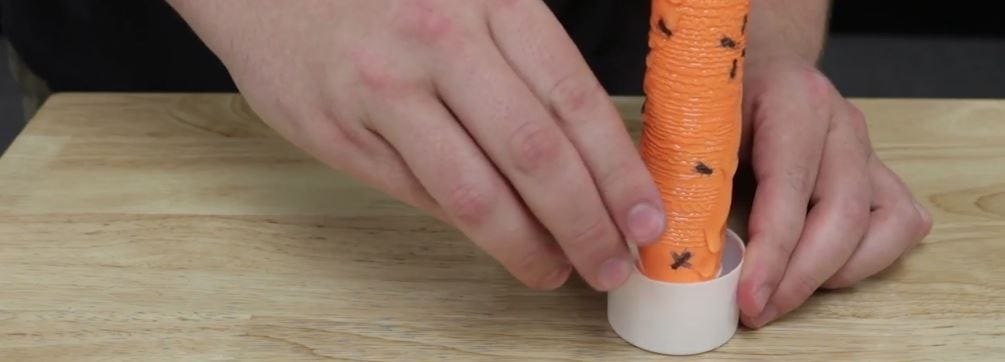
These ready to use use products will work to eliminate any remaining flies and monitor for future activity. It may be hanged or set on a flat surface.
Step 4: Spray Remaining Pests Directly
Spray any fruit flies or drain flies you see flying or crawling directly with Pyrid Insecticide Aerosol as a contact kill in your home.
This product may also be used a space spray against these pests, but prior to applicaiton be sure to remove all food items, utensils, and dishes.
Do not spray food stuffs directly and immediately clean off any food preparation surfaces contacted with this product.
Silverfish
Silverfish are actually a type of nocturnal insect that eat any starch and protein-rich items from wallpaper, oats, cereal, vegetables and more.
Most homeowners assume that silverfish infestations are signs of a dirty home, when in reality these pests are primarily drawn to your kitchen because it supports a humid and dark environment.
Identification
Silverfish are also known as bristletails due to their long, stubby bristles that stick out at the end of their tails. They are covered in silver scales and grow about half an inch in body length.
These small, silver pests wriggle across areas (their movement and the shine of their scales led to the pest's name.)
Inspection
Silverfish love organic and non-organic foods and favor dark and damp places, and can be found in kitchens where starchy materials, like cardboard boxes are stored,.
They can also be found in unopened food packages, the insulation in walls and around plumbing, and where flour and rolled oats are stored. They will also eat protein like dried meat and dead insects.
Treatment
Step 1: Lessen Moisture
To get rid of silverfish infestations in your kitchen, first control humidty and moisture levels by opening windows, turning on kitchen fans, and repairing leaky faucets or pipes.
You could also install a dehumidifiers for better moisture control. Be sure to dry off any moisture on counters or anywhere else you see water gathering.
Step 2: Remove Food Sources
When excessive moisture has been addressed, you will then need to address food sources for silverfish as well.
We recommend storing food items and non-organic materials in a sealable plastic container since this pest cannot ingest this substance.
Step 3: Treat Openings

Apply this product only to indoor cracks, crevices, and voids that children and pets cannot reach.
With a handheld duster, use 4 lbs. of Ficam Insect Bait per 1,000 sq. ft. or 6 oz (1-1/4 cups) of product per 100 square feet) of surface area.
Step 4: Eliminate Openings

Holes in floors will also need to be repaired with the proper materials.
Key Takeaways
What are the Most Common Pests in Kitchens?
- The most common pests in kitchens are silverfish, German cockroaches, ants, drain flies, and fruit flies.
How Do I Prevent Pest Infestations in My Kitchen
- Regulary clean-up after meals and on a weekly basis.
- Take trash and uneaten food to an outdoor trashcan away from your home foundation. Secure food in a sealed plastic container. Perform an outdoor barrier application with Supreme IT around your homes foundation.
Where Do Bugs Hide in Kitchens
- Pests tend to hide behind appliances, under refrigerators, and other places where food is stored like pantries or cabinets.










